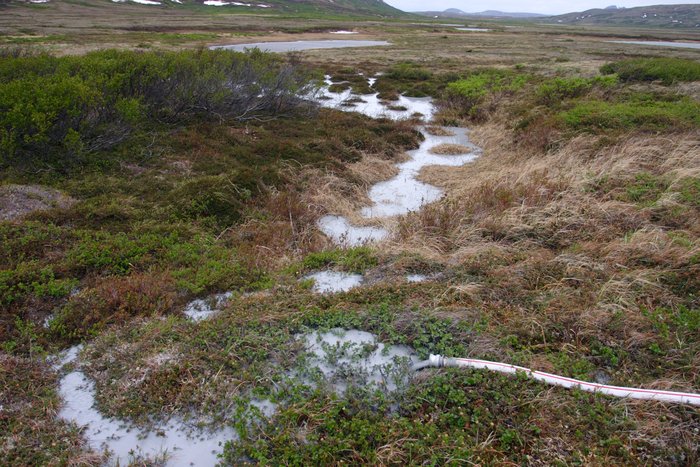

Project Opposition
The proposed Pebble mine is extraordinarily controversial. Sitting at the center of a storm of publicity and political efforts, it has generated intense opposition on an Alaskan and even national level. Although mostly driven by local residents (native and non-native), fishermen, and conservation organizations, opposition to the mine has grown to include some shareholders in the mining company itself, as well as consumers of both seafood and jewelry.
In the Bristol Bay region, where the mine would be located, most communities and governmental bodies are opposed to the project (around 20 native corporations, village councils, tribes, and cities). Notably, this includes the regional level native organizations: the Bristol Bay Native Corporationand theBristol Bay Native Association. Supporters of the mine include the village of Iliamna, where Pebble exploration efforts are based, the Alaska Peninsula and Twin Hills Native Corporations, and the tribes of South Naknek and King Salmon.
Several Alaska-based groups exist primarily to oppose the Pebble Project, including Nunamta Aulukestai(“Caretakers of the Land”), the United Tribes of Bristol Bay, the Renewable Resources Coalition, the Save Bristol Bay, Rebels to the Pebble, Stop Pebble Mine, and Our Bristol Bay. Organizations involved in sport and commercial fishing, such as the Alaska Wilderness Recreation and Tourism Association, the Alaska Independent Fishermen’s Marketing Association and “Commercial Fishermen for Bristol Bay” have also been heavily involved. Some established Alaskan conservation organizations have also taken an official stance against the mine, most importantly the Alaska Conservation Foundation (ACF) and Trustees for Alaska.
While Pebble opposition is primarily Alaska based (the prospect sits on Alaska state land), the issue has attracted a fair amount of national media attention in recent years. The national organization Trout Unlimited has been heavily involved in fighting the proposal. Other national groups such as the Natural Resource Defense Council (NRDC), Wild Salmon Center, and even a group of shareholders in Anglo American have voiced opposition to the project.
Another facet to the opposition has been directed at consumers. Over 60 jewelers have signed the “Bristol Bay Protection Pledge” which supports protection of Bristol Bay Fisheries through the banning of mining in the area. Likewise a number of Seattle-area chefs have joined a campaign to serve wild salmon while highlighting the risks of the mine. Lastly several hundred clothing companies, equipment companies, and outfitters have announced opposition to the project. A list of these companies can be found here.

Legal and Political Opposition
Legal challenges to the Bristol Bay Area Plan (designating the site for mining) and Pebble’s exploration permits have been brought by the Nondalton Tribal Council and Nunamta Aulukestai. Several bills have been brought before the legislature to protect the area, including a proposal turning the area into a game refuge, and a proposal to protect salmon spawning waters of Bristol Bay. None have passed. Both sides of the Pebble controversy spent heavily on advertising over the unsuccessful Alaska Clean Water Initiative on the 2008 ballot, which would have strictly limited pollution by new large mines. A number of groups have petitioned the EPA to designate the Koktuli River as an “Outstanding National Resource Water”. A decision on this issue is not likely until 2018, as the state has yet to meet federal requirements for evaluating applications.
The American Rivers organization has classified the Bristol Bay rivers among the country’s most endangered rivers as a result of the mine proposal. A partial legal victory was obtained by mine opponents in 2011 when Pebble was fined $45,000 for water-related violations during exploration though the plaintiffs had attempted to prove much larger damages.
In October 2011 the Lake and Peninsula Borough passed an ordinance that would functionally ban open-bit mining in the Borough. The state of Alaska and the Pebble Partnership both filed lawsuits against this ordinance, claiming it to be unconstitutional, a claim upheld by a state supreme court judge in 2014. A statewide ballot initiative with the potential to veto the Pebble project began in December 2012, was upheld in court and passed into law in 2014. The ordinance died, after a three-year long lawsuit, according to a 2014 ruling by a state supreme court judge, declaring the ordinance unconstitutional and that the current permitting process through the Legislature and Department of Natural Resources is adequate for regulating the state’s natural resources and no single community or borough should have power superseding these state authorities.
At the request of a coalition of local groups and environmental organizations, the EPA launched a “Bristol Bay Watershed Assessment” in 2012. In 2014, the EPA completed this assessment, which concluded that mining posed a significant risk to fisheries in the area. As result the EPA released a proposed determination on the Bristol Bay watershed, invoking the Clean Water Act 404(c) (the so-called “veto authority” granted by section 404(c)) to restrict permitting of the Pebble Project. Read the full report here. In response to the EPA’s proposed determination, the Pebble Partnership sued the EPA, but despite an “injunction granted” by a federal judge limiting restrictions imposed by the EPA on the Pebble Project, no further permitting or proposals were made by the Pebble Limited Partnership during 2015 or 2016.
In 2017, the EPA withdrew its preemptive opposition to the proposed Pebble Mine in exchange for the Pebble Limited Partnership dropping lawsuits against the EPA. This news was followed by Pebble Limited Partnership proposing a smaller mine site at a press conference. Opponents cite the unacceptable risk of any mine in the Bristol Bay watershed regardless of size, ongoing uncertainty with state and federal permitting process, as well as the large upfront investments required making the Pebble Mine uneconomic.
A permit application for exploration at the nearby Groundhog prospect was met with early opposition similar to that of the Pebble Mine. Like Pebble, the Groundhog prospect is a porphyry copper and gold deposit located in the upper Bristol Bay watershed.
Created: Jan. 19, 2018